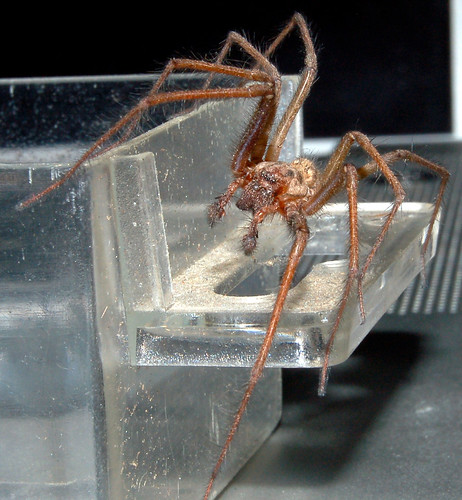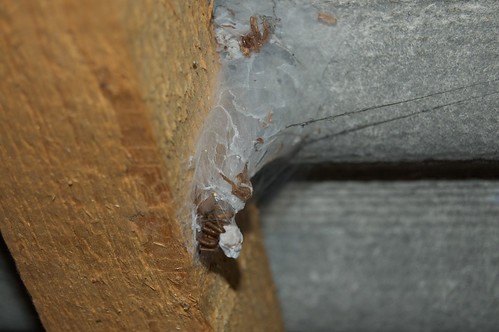As autumn draws in we start to see more spiders around the house, what are they are why are there here?
The most commonly encountered UK house spider is Tegenaria Duellica, this cute little fellow:

I saw fellow because the great majority of these you’ll see are males – you can tell by the enlarged pedipalps at the front close to the body and eyes, making the spider look like it’s wearing boxing gloves. Females lack the boxing glove look.
The females are usually to be found in cooler outbuildings and attics in their flat funnel-like webs. They wait for a male to approach and mate. The male will stay by the female, mating several times, usually dying and being eaten by the female in the process.

The female will lay around 50 eggs in a collection of marble sized whitish-yellowish egg sacks – you’ve probably seen these in sheds and under floor boards. The female’s job is done and she dies (a small percentage live and will mate a second time).

The eggs hatch when the weather warms up in early spring. the spiderlings take a year to 18 months to reach sexual maturity and start the process all over again.
